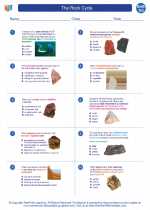Erythrocytes
Erythrocytes, also known as red blood cells, are the most common type of blood cell. They are responsible for carrying oxygen from the lungs to the rest of the body and carbon dioxide from the body to the lungs for exhalation. Erythrocytes are produced in the bone marrow and have a unique structure that allows them to efficiently carry out their oxygen-carrying function.
Structure of Erythrocytes
Erythrocytes are small, biconcave disc-shaped cells that lack a nucleus and most organelles. This unique structure allows for a large surface area-to-volume ratio, which is essential for the efficient exchange of oxygen and carbon dioxide. The red color of these cells comes from the protein hemoglobin, which binds to oxygen and gives blood its red color.
Function of Erythrocytes
The primary function of erythrocytes is to transport oxygen from the lungs to the tissues and organs of the body. They achieve this through the binding of oxygen to hemoglobin, which is then carried through the bloodstream. Additionally, erythrocytes help in the removal of carbon dioxide from the body by transporting it back to the lungs for exhalation.
Regulation of Erythrocyte Production
Erythrocyte production, known as erythropoiesis, is regulated by the hormone erythropoietin, which is produced by the kidneys in response to low oxygen levels in the blood. This hormone stimulates the bone marrow to produce more erythrocytes, ensuring an adequate oxygen supply to the body's tissues.
Study Guide
- Describe the structure of erythrocytes and explain how it contributes to their function.
- What is the primary function of erythrocytes in the body?
- Explain the role of hemoglobin in erythrocytes and its significance in oxygen transport.
- Discuss the regulation of erythrocyte production and the role of erythropoietin in this process.
- Compare and contrast the structure and function of erythrocytes with other types of blood cells.
◂Earth Science Worksheets and Study Guides High School. The Rock Cycle

 Worksheet/Answer key
Worksheet/Answer key
 Worksheet/Answer key
Worksheet/Answer key
 Worksheet/Answer key
Worksheet/Answer key
 Vocabulary/Answer key
Vocabulary/Answer key
 Vocabulary/Answer key
Vocabulary/Answer key
 Vocabulary/Answer key
Vocabulary/Answer key
